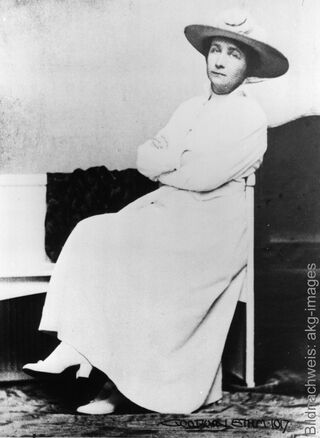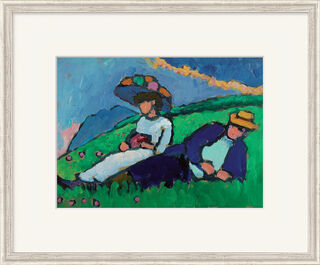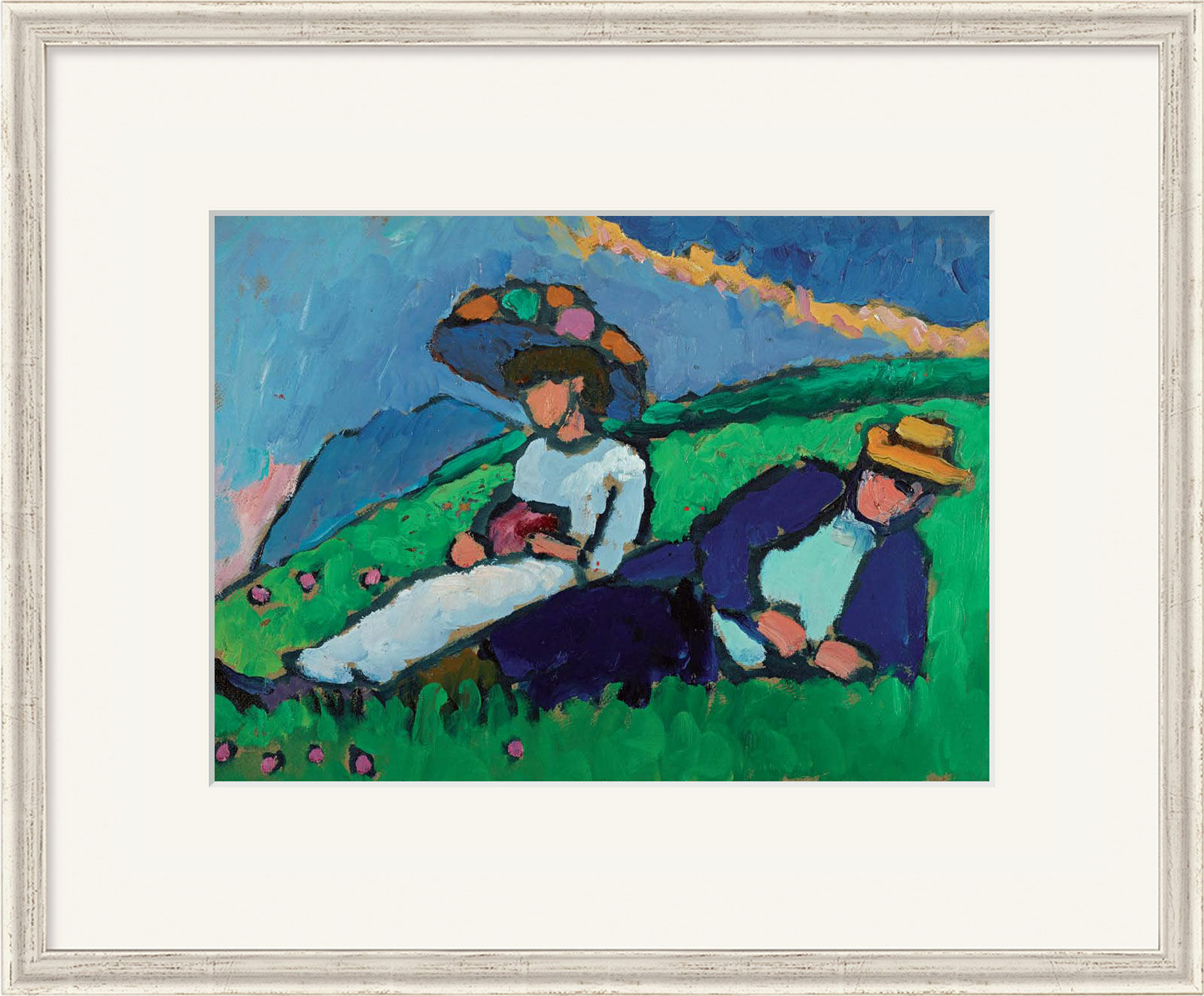Picture "Jawlensky and Werefkin" (1909), framed


Picture "Jawlensky and Werefkin" (1909), framed
Quick info
reproduction on LuxoArtVelvet paper | framed | passe-partout | glazed | size approx. 54.5 x 66 cm (h/w)
Detailed description
Picture "Jawlensky and Werefkin" (1909), framed
Gabriele Münter and her partner at the time, Wassily Kandinsky, spent a lot of time with the artist couple Jawlenksy and Werefkin in the Upper Bavarian town of Murnau. In addition to numerous paintings, Murnau is also regarded as a source of inspiration for the formation of the "Blaue Reiter".
Original: Oil on cardboard. Munich, Städtische Galerie im Lenbachhaus.
4-colour reproduction on LuxoArt velvet paper. Motif size 32 x 43.5 cm (h/w). Framed in a silver solid wood frame with bevel cut passe-partout, glazed. Size approx. 54.5 x 66 cm (h/w). © VG Bild-Kunst, Bonn 2017.
Frame configurator
Customised picture frame

Frame configurator
Customised picture frame







About Gabriele Münter
1877-1962
Gabriele Münter was an Expressionist painter and a member of the New Munich Artists' Association but did not belong to the Blaue Reiter movement.
Gabriele Münter became known as Wassily Kandinsky's companion. She saved a significant part of his works through the war and post-war period and later made them known to the public, together with paintings by artist friends of the Blaue Reiter and her own works.
When Gabriele Münter bought a house in Murnau in 1909, which she lived in during the summer with her partner Kandinsky, the idyllically situated domicile soon developed into a centre of the avant-garde. Marc, Macke and Werefkin, Jawlensky were regular guests. They all found much inspiration for their artistic work in the area around the Staffelsee – art history likes to describe these years surrounding the founding of the Blaue Reiter as the "Murnau period".
With the beginning of the First World War and the separation from Kandinsky, turbulent years followed for Münter. In 1931, she moved to Murnau for good. The landscape in the foothills of the Bavarian Alps plays a major role in her work from this period, as it did at the beginning of the century. When Münter died in Murnau in 1962, she had long been considered, along with Paula Modersohn-Becker, the most important Expressionist painter.
The German artists‘ association "Der Blaue Reiter" ("The Blue Rider") was founded in Munich in 1911 by Wassily Kandinsky and Franz Marc during the German Expressionist period.
The name was originally the title of the painting by Kandinsky and also the title of the almanac published by Kandinsky and Marc. Members included Paul Klee and August Macke. The group criticised the prevailing art canon as too academic and elitist and demanded more openness and diversity. The artists turned away from realism and began to paint expressively in an increasingly abstract style using strong colours.
The group disbanded at the beginning of World War I.
Artistic movement that replaced Impressionism in the early 20th century.
Expressionism is the German form of the art revolution in painting, graphic art and sculpture, which found its precursor in the works of Paul Cézanne, Vincent van Gogh and Paul Gauguin in the late 19th century. The Expressionists attempted to advance to the primal elements of painting. With vibrant, unbroken colours in large areas and with the emphasis on the line and the resulting targeted suggestive expressiveness, they fought against the artistic taste established by the bourgeoisie.
The most important representatives of Expressionism were the founders of "Die Brücke" (The Bridge): Ernst Ludwig Kirchner, Erich Heckel, Karl Schmidt-Rottluff, Max Pechstein, Otto Mueller and Franz Marc, August Macke and others.
Masters of Viennese Expressionism are Egon Schiele and Oskar Kokoschka. Among the sculptors, Ernst Barlach is the most famous.
Fauvism is the French form of Expressionism.


